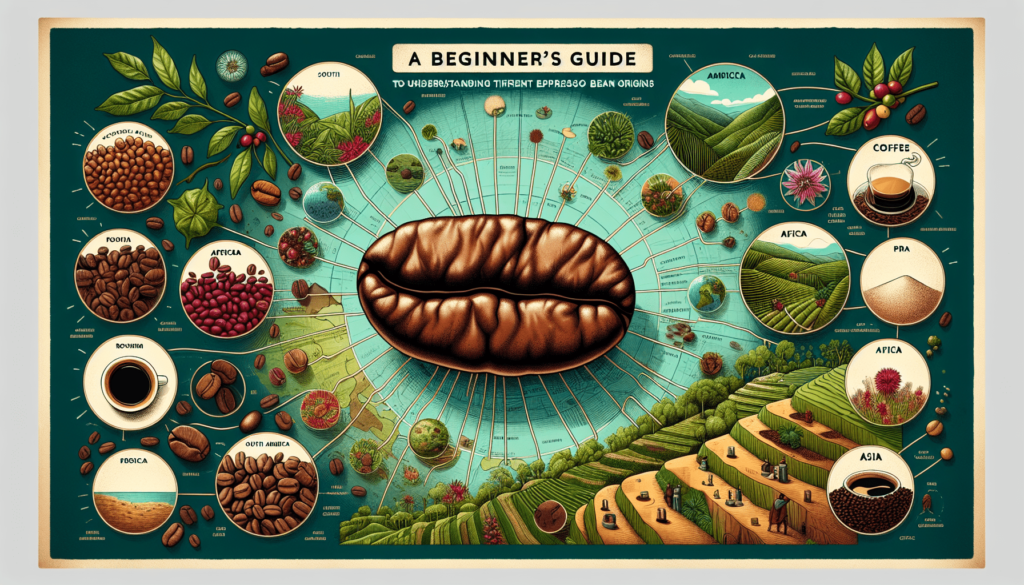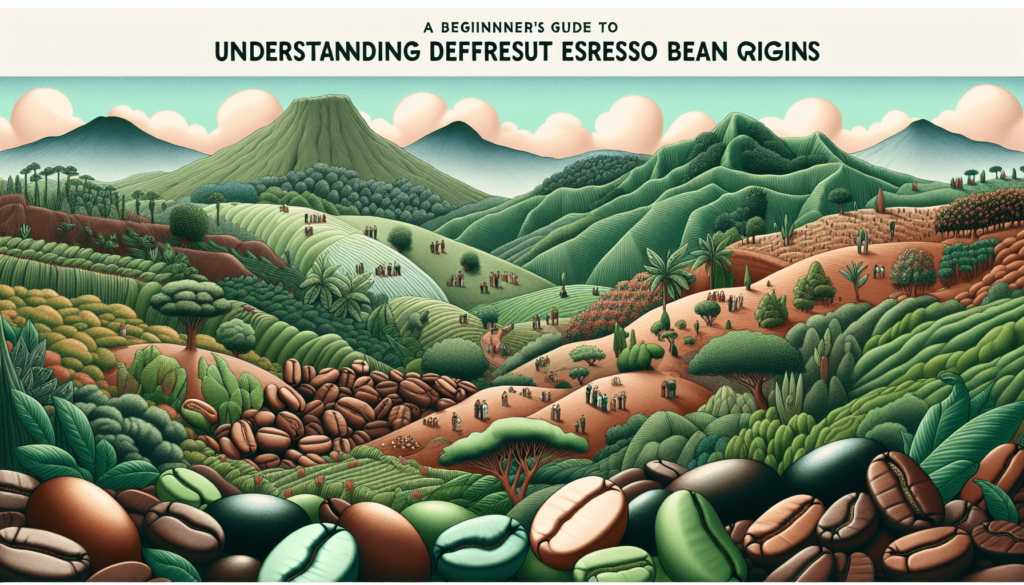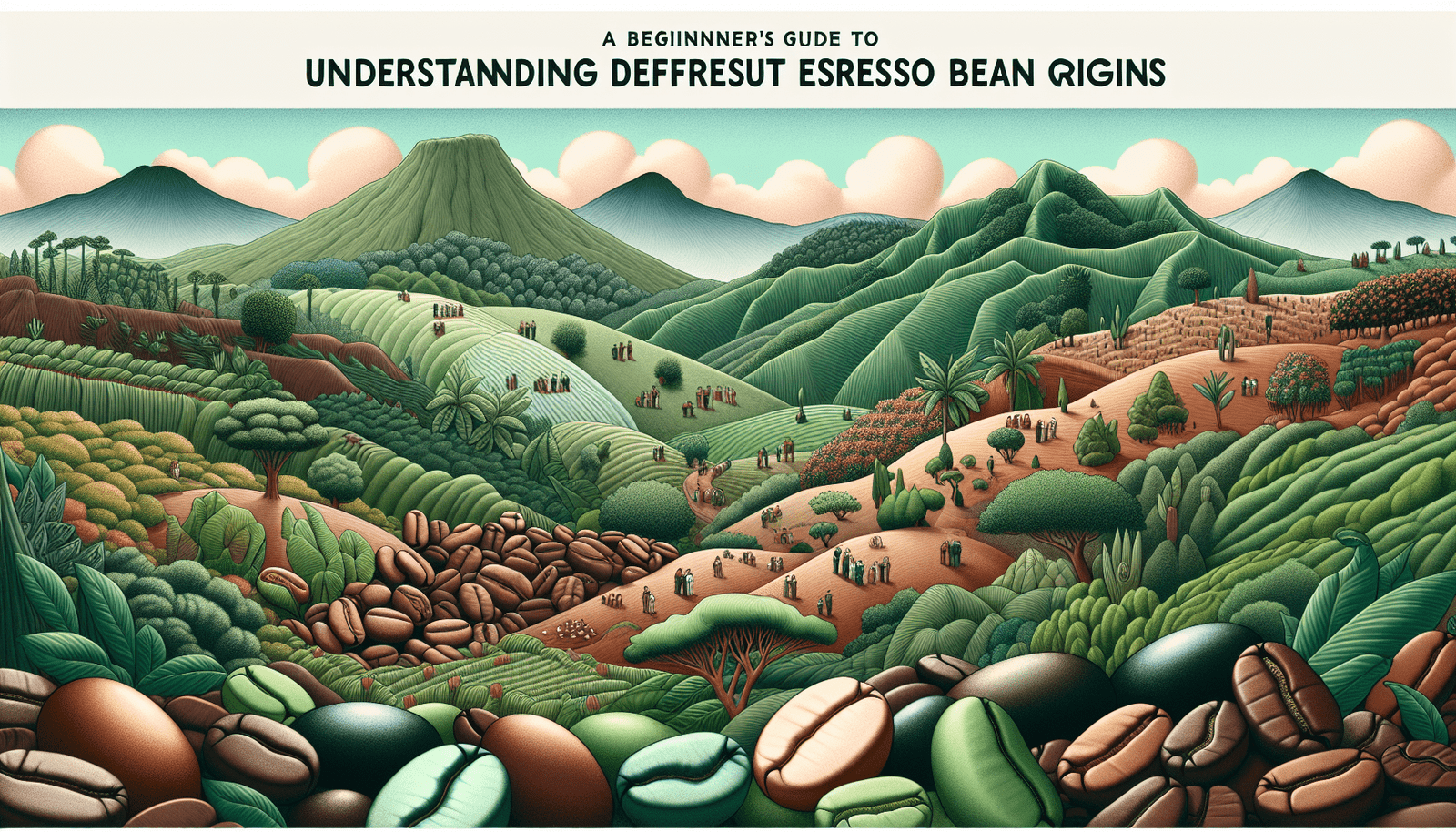When it comes to that perfect cup of espresso, every detail counts – including the origin of the beans. But if you’re new to the world of coffee, understanding the differences between espresso bean origins can seem overwhelming. Fear not, dear coffee lover, for this beginner’s guide is here to unravel the mysteries of coffee cultivation. From the rich and earthy flavors of beans from South America to the fruity and acidity-filled delights of beans from Africa, we will take you on a journey through the various espresso bean origins. So grab a cup of your favorite brew and let’s explore the world of coffee together!

Understanding Espresso Beans
What are espresso beans?
Espresso beans are a type of coffee bean specifically chosen and roasted to be used in making espresso. While they may look similar to other coffee beans, espresso beans are typically darker in roast and have a stronger flavor. These beans are the foundation of a delicious and aromatic cup of espresso.
Why is origin important?
The origin of espresso beans plays a crucial role in determining their flavor, acidity, and overall quality. Just like wine, coffee beans exhibit unique characteristics based on where they are grown. Factors such as soil composition, altitude, climate, and processing methods all contribute to the flavor profile of the beans. By understanding the origins of espresso beans, you can choose the flavors that appeal to your taste preferences.
What affects the flavor of espresso beans?
Several factors influence the flavor of espresso beans. These can include:
- Altitude: Higher altitudes can produce beans with more acidity and floral notes, while lower altitudes may result in a more earthy and chocolatey flavor.
- Climate: The overall climate of a region can affect the bean’s flavor. Consistent temperatures and rainfall can lead to a balanced and well-rounded taste, while drastic weather fluctuations might result in more unpredictable flavors.
- Soil Composition: The minerals and nutrients present in the soil can impact the bean’s flavor. Different soil compositions can create a range of flavors, from fruity and vibrant to nutty and caramel-like.
- Processing Methods: The way the beans are processed after harvesting can influence their flavor. Methods such as washed processing, natural processing, or honey processing can all contribute to distinct taste profiles.
Popular Espresso Bean Origins
Italian Espresso
Italian espresso is renowned worldwide for its rich and intense flavor. Italian espresso beans are typically roasted very dark to achieve a bold and robust taste. The brewing process tends to be shorter, resulting in a concentrated shot of espresso. The strong flavor profile of Italian espresso makes it a popular choice for those who prefer a more traditional and powerful cup of coffee.
Brazilian Espresso
Brazil is one of the largest producers of coffee beans in the world, including those used for espresso. Brazilian espresso beans are known for their smooth and nutty flavor. They often have lower acidity levels and a medium body, making them ideal for those who enjoy a milder and well-balanced espresso. The flavors of Brazilian espresso beans can vary depending on the region and elevation at which they are grown.
Ethiopian Espresso
Ethiopian espresso beans offer a unique and vibrant flavor experience. Known as the birthplace of coffee, Ethiopia produces beans that have a wide range of flavors and profiles. Ethiopian espresso beans often exhibit fruity and floral notes, with hints of wine-like acidity. The complexity and diversity of flavors make Ethiopian espresso a favorite among coffee connoisseurs who appreciate a more intricate and nuanced cup of espresso.
Colombian Espresso
Colombian coffee is famous for its high-quality beans and unique flavor characteristics. Colombian espresso beans generally have a well-balanced profile, with medium acidity and a smooth body. They often showcase notes of caramel, chocolate, and citrus. The altitude at which Colombian beans are grown contributes to their bright and lively acidity, making them a popular choice for espresso lovers seeking a harmonious and flavorful experience.
Costa Rican Espresso
Costa Rican espresso beans are known for their bright acidity and clean taste. The country’s rich volcanic soil and high altitudes contribute to the beans’ unique flavor characteristics. Costa Rican espresso often exudes notes of citrus, honey, and red berries. These beans are typically medium-roasted, allowing the sweetness and acidity to shine through. If you enjoy a bright and crisp espresso, Costa Rican beans are worth a try.
Guatemalan Espresso
Guatemalan espresso beans are highly regarded for their complexity and depth of flavor. Grown in regions with diverse microclimates, Guatemalan beans offer a range of taste profiles. Depending on the area of cultivation, these beans can exhibit notes of chocolate, caramel, and even tropical fruits. The acidity levels vary, and the body can range from medium to full-bodied. Guatemalan espresso beans are a popular choice for those who appreciate a rich and multi-layered espresso experience.
Jamaican Espresso
Jamaican espresso beans, specifically those hailing from the Blue Mountains region, are world-famous for their exceptional quality and unique flavors. These beans are grown at high altitudes in the misty Blue Mountains, resulting in a mild yet distinct taste. Jamaican espresso beans are known for their smoothness, low acidity, and subtle sweetness. They often display flavors of chocolate, nuts, and floral undertones. Due to their limited production and high demand, Jamaican espresso beans are highly sought after and considered a luxury in the coffee world.
Indonesian Espresso
Indonesian espresso beans, particularly those from Sumatra and Java, offer a bold and intense flavor experience. These beans are typically grown in volcanic soil, which imparts a rich and earthy taste. Indonesian espresso often showcases dark chocolate, spices, and tobacco notes. The coffee’s heavy body and low acidity make it a perfect choice for those who prefer a full-bodied and robust espresso.
In conclusion, understanding the origins of espresso beans is essential for discovering the diverse flavors and profiles they have to offer. Whether you prefer the intensity of Italian espresso, the bright acidity of Ethiopian beans, or the smoothness of Brazilian coffee, exploring different origins allows you to embark on a flavorful journey through the world of espresso. Experiment with different bean origins, try various brands, and savor the unique taste profiles they bring to your daily cup of espresso.


